Foamex is made from the same material your double glazed doors and windows are likely made of, and because of this it is extremely weather resistant and perfect for making signs that will withstand the elements outside.

Foamex board is made from Polyvinyl Chloride, or PVC for short, which is a very widely used plastic because of its versatility. Despite the name, the product itself is not soft or flexible, the foam association only relates to the porous bubbles that make up its core. This core is still rigid, and is compressed between two smooth sheets to create a board that is strong, but still relatively lightweight and low cost.
PVC is used to make double glazing because of its durability and resistance to damage by the elements, and these same characteristics make it highly suitable for creating outdoor signage. It is weather proof, and resistant to fading for as much as 10 years depending on the product and its location.
Its excellent ability to take and hold ink when printed on, as well as being highly resistant to damage caused by the weather, is another reason why Foamex printed signs remain so widespread.
It is produced in three thicknesses 3mm, 5mm and 10mm. When used outdoors the 3mm is a bit too flexible on its own to be wind resistant, so 5mm is the most common thickness used. 10mm is significantly stronger and heavier and suitable for larger, permanent signs needed for long term use.
Besides Foamex board there are a number of other materials that are also suitable materials to make outdoor signage from, these include:
DiBOND
The Aluminium sheeting used in Dibond means the material is more expensive, but this makes the boards very strong. It is also highly resistant to weather and corrosion.
A unique feature of Dibond is that as well as being able to be bent to angles like Foamex can, it is also able to be rolled to produce curves to add to its appearance. This capability and the flexibility it allows in design, draws people to Foamex printed signs.
If a premium finish to the sign is paramount, Dibond will give you the best possible look.
Read our blog on the differences between Foamex and Dibond here.
CORREX
It’s very cheap and lightweight, making it an attractive option for temporary signage that is typically more budget sensitive.
The fluted design of the material makes it susceptible to bending in the wind along the flute lines, so mounting it onto another material is often necessary if using outdoors. Doubling up the layers can also work to strengthen it.
BANNERGRADE PVC
The cheapest option, it is only suitable for very temporary uses or in situations where it needs to be easily transportable and reusable.
It does the job and its size potential can make it highly visible, but it doesn’t look as smart as other materials.
All of these materials have their benefits and disadvantages. Foamex is so popular because it combines the advantages provided by the others into a product that is also cost efficient. None of the others can match its ability to simultaneously be tough, weatherproof, professional-looking, lightweight and versatile – and still be kind on the budget.


